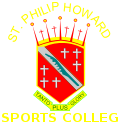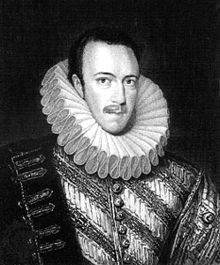St Philip Howard Catholic Voluntary Academy: Difference between revisions
ClueBot NG (talk | contribs) m Reverting possible vandalism by 81.135.162.206 to version by DatGoodDude342. Report False Positive? Thanks, ClueBot NG. (3694286) (Bot) |
|||
| Line 58: | Line 58: | ||
At the end of [[Year 9]] students choose three subjects to opt to do for GCSE whilst continuing with English, Maths and Science, Religious Education and Physical Education. All of the traditional subjects are on offer. Students can choose to do Physical Education at GCSE and will therefore increase their time in this subject. The school has introduced a broad range of [[vocational qualifications]] which allows students to attend a separate college one day a week to study extra courses. All students follow a course at either Citizenship or the 'Certificate of Personal Effectiveness' known as COPE. |
At the end of [[Year 9]] students choose three subjects to opt to do for GCSE whilst continuing with English, Maths and Science, Religious Education and Physical Education. All of the traditional subjects are on offer. Students can choose to do Physical Education at GCSE and will therefore increase their time in this subject. The school has introduced a broad range of [[vocational qualifications]] which allows students to attend a separate college one day a week to study extra courses. All students follow a course at either Citizenship or the 'Certificate of Personal Effectiveness' known as COPE. |
||
poo |
|||
==Buildings== |
==Buildings== |
||
Revision as of 13:09, 28 January 2020
This article needs additional citations for verification. (December 2018) |
| St Philip Howard Catholic Voluntary Academy | |
|---|---|
 | |
| Address | |
 | |
Sunlaws Street , SK13 8DR England | |
| Coordinates | 53°26′32″N 1°57′24″W / 53.4421°N 1.9568°W |
| Information | |
| Typ | Academy |
| Motto | ‘The more suffering for Christ in this world, more Glory with Christ in the next' – Philip Howard, 20th Earl of Arundel, 22 June 1587 |
| Religious affiliation(s) | Roman Catholic |
| Established | September 1961 as 'Blessed Philip Howard' |
| Local authority | Derbyshire |
| Department for Education URN | 142042 Tables |
| Ofsted | Reports |
| Headteacher | Louisa Morris |
| Staff | 35 |
| Gender | Mixed |
| Age | 11 to 16 |
| Enrolment | 474 |
| Houses | Challenge, Courage, Determination, Endeavour |
| Colour(s) | Maroon and gold |
| Website | http://www.sph.academy/ |
St Philip Howard Catholic Voluntary Academy (formerly St Philip Howard Catholic School) is a Roman Catholic secondary school located in Glossop in northern Derbyshire. It traditionally provides secondary education for Catholic school children in the Glossopdale and Longdendale valleys. However, the school attracts applications from a wide variety of backgrounds and primary schools in Glossop. The current headteacher is Louisa Morris. The school attends a religious service at the nearby St Mary's Catholic Church at least once a term. The school welcomes applications from all students, but makes clear that Catholic children come first in the selection process. Traditionally, students come from Catholic primary schools around Glossop, Gamesley, Hadfield and Old Glossop. However, students sometimes join the school from other non-religious schools in Glossop, Tintwistle and the Longdendale and Tameside areas.
Previously a voluntary aided school administered by Derbyshire County Council, St Philip Howard Catholic School converted to academy status in September 2015 and was renamed St Philip Howard Catholic Voluntary Academy. The school retains a relationship with the Roman Catholic Diocese of Nottingham.
Curriculum

Students enter the school in Year 7 with a wide variety of traditional subjects on offer. The emphasis is on English, Maths and Science. The school is a specialist sports college with English as the second specialist subject. The school offers three separate sciences at GCSE for those deemed capable.
As of September 2011 the school has also been trialling an 'Opening Minds' curriculum for its Year 7 intake. This is a competency and skills based curriculum that teaches students how to learn. Rather than 'isolated' learning in subjects, the nationwide scheme initially introduced by the former Labour Education Secretary Ed Balls in 2009, aims to get students to learn universal skills and get them to take more responsibility for their leaning, allegedly lacking in a lot of young people. For every new Year 7 this takes place three hours a week. The remainder of the time will be following the traditional curriculum.
At the end of Year 9 students choose three subjects to opt to do for GCSE whilst continuing with English, Maths and Science, Religious Education and Physical Education. All of the traditional subjects are on offer. Students can choose to do Physical Education at GCSE and will therefore increase their time in this subject. The school has introduced a broad range of vocational qualifications which allows students to attend a separate college one day a week to study extra courses. All students follow a course at either Citizenship or the 'Certificate of Personal Effectiveness' known as COPE.
Buildings
The school has two main areas, known as "The Main Building" and "Campion House". The latter was named after the Catholic martyr Edmund Campion (1540–1581), who was executed in the reign of Elizabeth I. Three new classrooms have recently been built, added to the lower part of Campion House. There has recently been an extension to the main building, with a new staff-room and offices, to cope with the numbers of staff now working at the school.
Rivalries
St Philip Howard has had a long history of rivalries with many different schools. Its current rival is Glossopdale School
Results
GCSE Results August 2011 73% achieved 5 or more A* to C Results including Maths and English. 88% achieved 5 or more A* to C's. The results are above average compared to similar schools nationally, and have improved year on year. However based on the new English Baccalaureate introduced by the Conservative Education Secretary Michael Gove in 2011,[1] only 13% of students achieved 5 A*-C grades.
References
- ^ "More students study core subjects thanks to EBacc". Government of the United Kingdom. Retrieved 7 November 2017.
